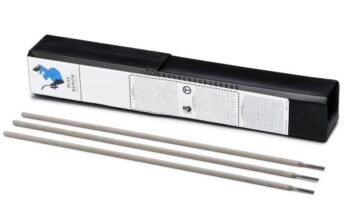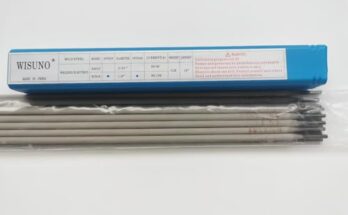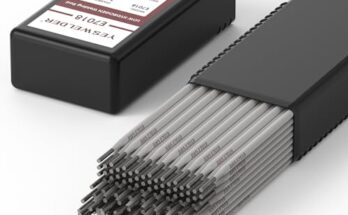Ever wondered why your stick welding project isn’t as smooth as you’d like? Understanding what causes spatter when stick welding is crucial for cleaner welds and improved efficiency. This guide will break down the reasons behind spatter, offer solutions, and help you master the art of a clean weld.
What is
Spatter in Stick Welding?
Stick welding, also known as shielded metal arc welding (SMAW), involves melting a metal electrode to fuse metal pieces. Spatter, in this context, refers to the tiny molten metal droplets that eject from the weld puddle during the process. These droplets can stick to the workpiece, the surrounding area, or even your welding helmet. More than just an aesthetic issue, excessive spatter can weaken the weld, making it prone to cracking or failure. It’s like having unwanted crumbs on a perfectly baked cake – they don’t ruin the whole thing, but they certainly affect the final presentation.
Think of it like this: imagine trying to pour honey. If you pour it too quickly, some droplets will splatter. Stick welding is similar. If the arc isn’t stable, or the process isn’t properly controlled, molten metal gets flung outwards as spatter.
Why Does Spatter Matter?
Excessive spatter isn’t just annoying; it significantly impacts weld quality and safety. It can compromise the integrity of the weld itself, creating weak points that lead to premature failure. Imagine building a bridge; if some of the welding spattered, causing weaker areas, it could lead to structural damage. Further, spatter can create porosity (small holes) in the weld, weakening it further. Cleanup is also time-consuming, especially for intricate projects.
From a safety perspective, spatter can cause burns if it lands on skin. Hot spatter can also damage surrounding materials and equipment. For example, I once saw a fellow welder accidentally cause a small fire near some flammable materials due to stray spatter. This wasn’t a large incident, but it underlines the importance of controlled welding to minimize such risks.
Factors Contributing to Weld Spatter
Electrode Selection and Technique
The type of electrode used plays a vital role. Different electrodes have different properties affecting spatter. Some electrodes are designed for lower spatter, while others are more prone to it. For instance, electrodes with a thicker coating generally produce less spatter than those with a thinner coating. The coating helps stabilize the arc and reduce the likelihood of spatter. Using the wrong electrode for the job is like trying to cut wood with a screwdriver instead of a saw – it won’t work as efficiently and will be less effective.
Welding technique is just as important. Using the correct amperage and travel speed is critical. Too much amperage can lead to excessive melting and increased spatter, like turning up the heat on a stove too high and burning your food. Conversely, too low an amperage results in a weak, unstable arc, also leading to more spatter. Maintaining a consistent arc length is also crucial for reducing spatter; a fluctuating arc length creates inconsistencies in the melting process. I’ve seen many beginners struggle with this aspect, so it’s something that requires practice to master.
Power Source and Settings
Your power source, whether a transformer or inverter, influences spatter. Old transformers often create more fluctuating arcs than modern inverters. Inverters usually offer better control over the welding current, leading to a more stable arc and reduced spatter. Imagine the difference between a finely tuned race car engine and a much older, less refined one—the more precise engine (inverter) will provide a more controlled and efficient welding experience.
The welding current, as already mentioned, is crucial. The correct amperage range for your specific electrode is detailed on the electrode packaging. Using an amperage outside this range leads to instability and increased spatter. Just like an engine needs the correct fuel mixture for optimal performance, a welder needs the correct amperage for the best weld quality.
Environmental Factors and Their Impact
Humidity and Ambient Temperature
High humidity can significantly increase spatter. Moisture in the air can interfere with the arc, leading to an unstable weld. Think of trying to light a match in a damp environment; it’s more difficult and often fails. Similarly, high humidity can disrupt the arc in stick welding, causing spatter. Keeping the welding environment dry is essential for minimizing spatter.
Ambient temperature also matters. Extreme temperatures can affect the electrode and the weld puddle, both contributing to spatter. Excessive heat can cause premature melting, while cold temperatures can lead to slower melting and more difficult arc control. Just like a car engine runs better at optimal temperatures, the welding process performs better within a comfortable temperature range.
Troubleshooting and Solutions for Spatter
Adjusting Welding Parameters
First, check your amperage. Is it within the recommended range for your electrode? If not, adjust it accordingly. Next, focus on your arc length. Maintain a consistent short arc to minimize spatter. Too long an arc results in unstable melting. Finally, practice your technique. Smooth, consistent electrode movement is key to reducing spatter.
Regularly checking and cleaning the electrode also helps. If the electrode tip becomes contaminated, the arc becomes unstable, causing more spatter. Think of it like cleaning a clogged nozzle; a clear nozzle ensures smooth flow, just as a clean electrode ensures a consistent arc.
Prevention Techniques
Electrode Preparation and Handling
Proper electrode preparation is crucial. Before welding, ensure the electrode is free from any damage or contamination, and gently tap the tip to remove any loose coating. Then, start with a consistent arc and maintain a uniform welding speed. Inconsistent movements will lead to uneven melting, and ultimately, more spatter.
Avoid storing electrodes in humid environments as moisture can affect the coating and lead to instability, potentially increasing spatter. The storage conditions should be dry and temperature controlled.
The Role of Welding Equipment
Power Source Capabilities
The quality of your power source significantly influences weld quality and spatter. Older transformers are more likely to produce erratic arcs and hence more spatter, compared to modern inverters. The latter offer better control and stability, minimizing unwanted spatter.
A stable power source acts like a steady hand guiding the weld; it helps maintain a consistent arc, preventing rapid variations in melting and reducing spatter.
Proper Grounding and Connections
Ensure your grounding is excellent and the connections are tight. Poor grounding can lead to arc instability and increased spatter. Think of a poorly grounded electrical appliance; it might not work properly or even be dangerous. A good ground provides a stable return path for the welding current, ensuring a smooth arc.
Regularly inspect connections to ensure tightness. Loose connections create resistance and can lead to arc fluctuations and spatter, similar to a faulty electrical wire that sparks and causes intermittent power.
Choosing the Right Electrode
Electrode Coatings and Their Impact
Different electrode coatings have varying spatter characteristics. Electrodes with low-hydrogen coatings, for instance, often exhibit less spatter than electrodes with heavier coatings. Choosing the right electrode type for the job is critical for weld quality and reducing spatter. Some coatings are designed to minimize spatter, while others prioritize strength or other properties.
It’s akin to selecting the correct paint for a particular surface; using the wrong paint might lead to issues, similarly, the wrong electrode might lead to increased spatter and poor weld quality.
Advanced Techniques for Spatter Reduction
Pulse Welding and its Benefits
Pulse welding utilizes a pulsed current, reducing spatter compared to conventional constant current. The pulsed current provides more control over the melting process, minimizing excessive heat input and spatter. It’s like using a delicate brush instead of a heavy roller when painting, allowing for greater precision.
Pulse welding is often used in applications where minimal spatter is required, for instance, in projects that need a high level of precision and quality.
Frequently Asked Questions
What is the most common cause of spatter in stick welding?
The most common cause is an improper welding technique, including incorrect amperage, arc length, and electrode travel speed. Using an unsuitable electrode type can also contribute significantly. Learn more about electrode selection for different applications.
How can I reduce spatter without changing my welding equipment?
Focus on your technique! Maintaining a consistent short arc, smooth electrode movement, and correct amperage are key. Proper electrode preparation and cleaning also play a vital role. Learn more about optimizing your welding technique.
What type of electrode produces the least spatter?
Low-hydrogen electrodes generally produce less spatter than others, though the specific performance varies by manufacturer and application. Always consult the manufacturer’s specifications for detailed information. Learn more about the types of electrodes available.
Does humidity significantly affect spatter?
Yes, significantly. High humidity increases spatter due to the moisture interfering with the arc stability. Welding in a dry environment is crucial for minimizing spatter. Learn more about environmental factors in welding.
Can I use different welding parameters for the same electrode?
While you can adjust parameters slightly, significant deviations from the manufacturer’s recommended ranges can lead to poor welds and excessive spatter. Always adhere closely to the recommended amperage for your electrode type. Learn more about electrode specifications.
Final Thoughts
Understanding what causes spatter when stick welding involves a multifaceted approach. It’s not just about the equipment; your technique, electrode choice, and environmental conditions all play critical roles. By carefully considering each factor, you can significantly reduce spatter and produce cleaner, stronger, and safer welds. Mastering these techniques elevates your welding skills to the next level, leading to greater efficiency and professional results. So, take your time, practice consistently, and soon you’ll be creating welds with minimal spatter. Happy welding!


